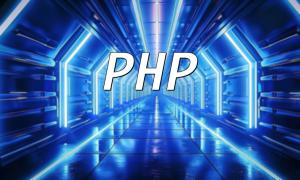In the modern digital world, many developers prefer to develop PHP applications on Linux. Linux provides a stable and secure environment, while PHP is known for its flexibility and efficiency, making it the language of choice for building dynamic websites and applications. This guide will walk you through setting up a development environment on Linux for PHP and applying SEO optimization techniques to enhance your website's search engine ranking.
Before you start developing in PHP, you'll need to configure a suitable development environment on your Linux system. Here are some key setup steps:
First, install Apache and PHP using the package manager. On Ubuntu systems, you can use the following commands:
<span class="fun">sudo apt update</span>
<span class="fun">sudo apt install apache2 php libapache2-mod-php</span>
After installation, start the Apache service:
<span class="fun">sudo systemctl start apache2</span>
<span class="fun">sudo systemctl enable apache2</span>
Many PHP applications require a database, and MySQL is one of the most popular choices. You can install MySQL on Linux with the following commands:
<span class="fun">sudo apt install mysql-server</span>
<span class="fun">sudo mysql_secure_installation</span>
After setting up the environment, you can start writing PHP code. Create a simple PHP file, such as index.php, in the /var/www/html directory:
<span class="fun">echo "Hello, Linux PHP Development!";</span>
Then, visit http://localhost/index.php in your browser to see the output.
To ensure your PHP website is indexed and ranks well on search engines, it’s essential to follow some SEO best practices.
Each page should have a unique title and meta description to help search engines better understand the page content. Here's a basic example:
<span class="fun"><title>PHP Development Guide on Linux</title></span>
<span class="fun"><meta name="description" content="Learn how to effectively develop PHP on Linux and follow SEO best practices."></span>
Ensure your HTML structure is clear and organized. Use the appropriate tags like
Page load speed is a critical factor for SEO. You can significantly improve load times by optimizing code, enabling caching technologies (such as OPcache), and using a Content Delivery Network (CDN).
PHP development on Linux offers both efficiency and flexibility, allowing developers to create secure and high-performance web applications. By configuring the right development environment, writing SEO-friendly code, and applying optimization techniques, you can improve your site's performance and visibility in search engine results. Start your PHP development journey today!









